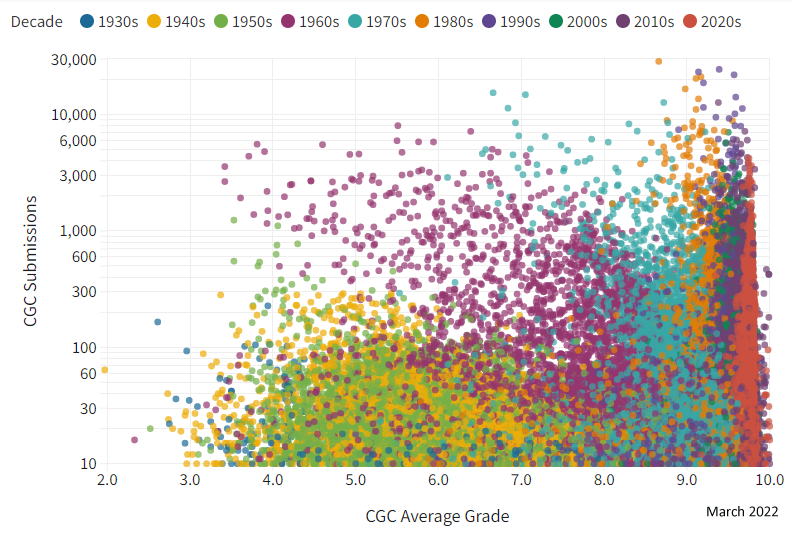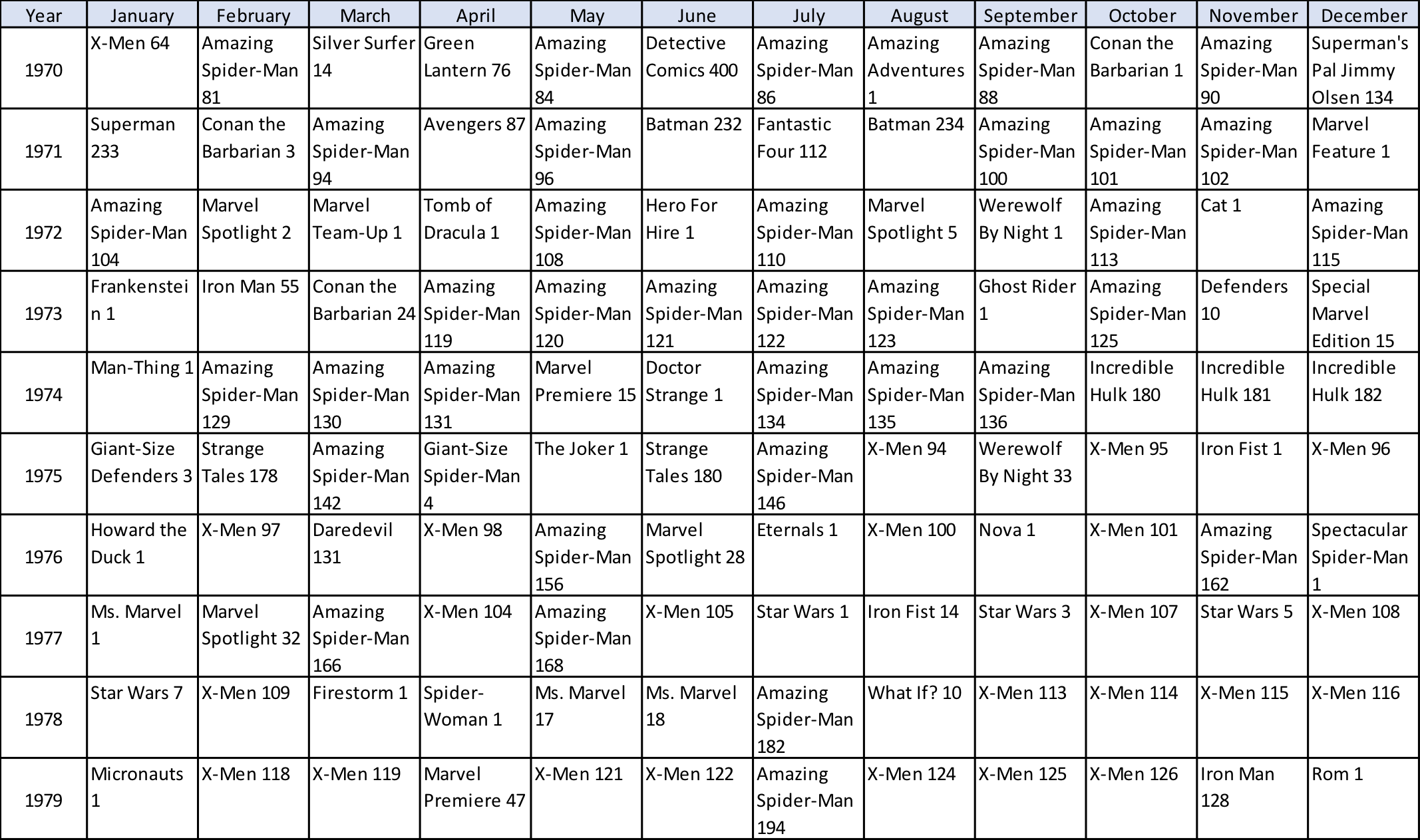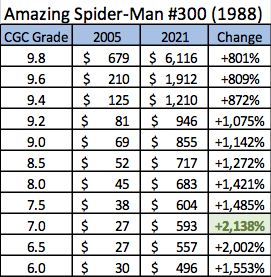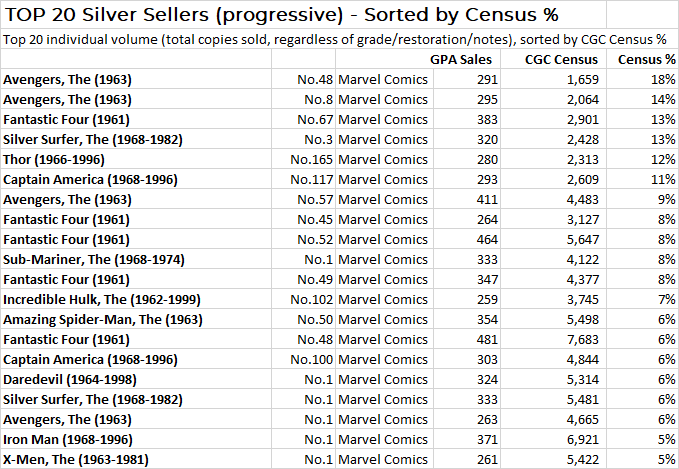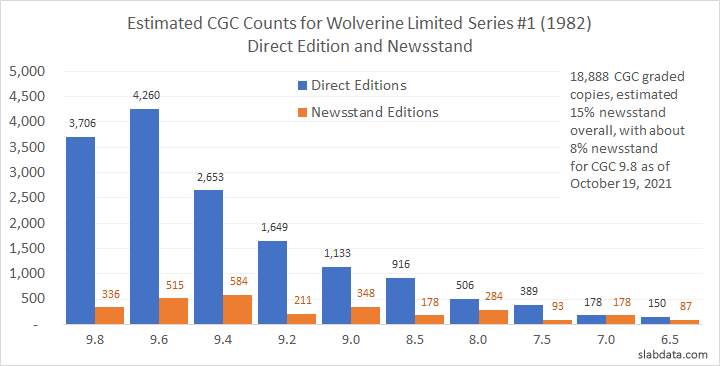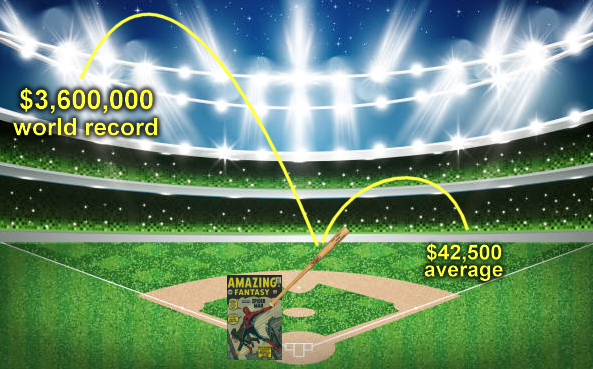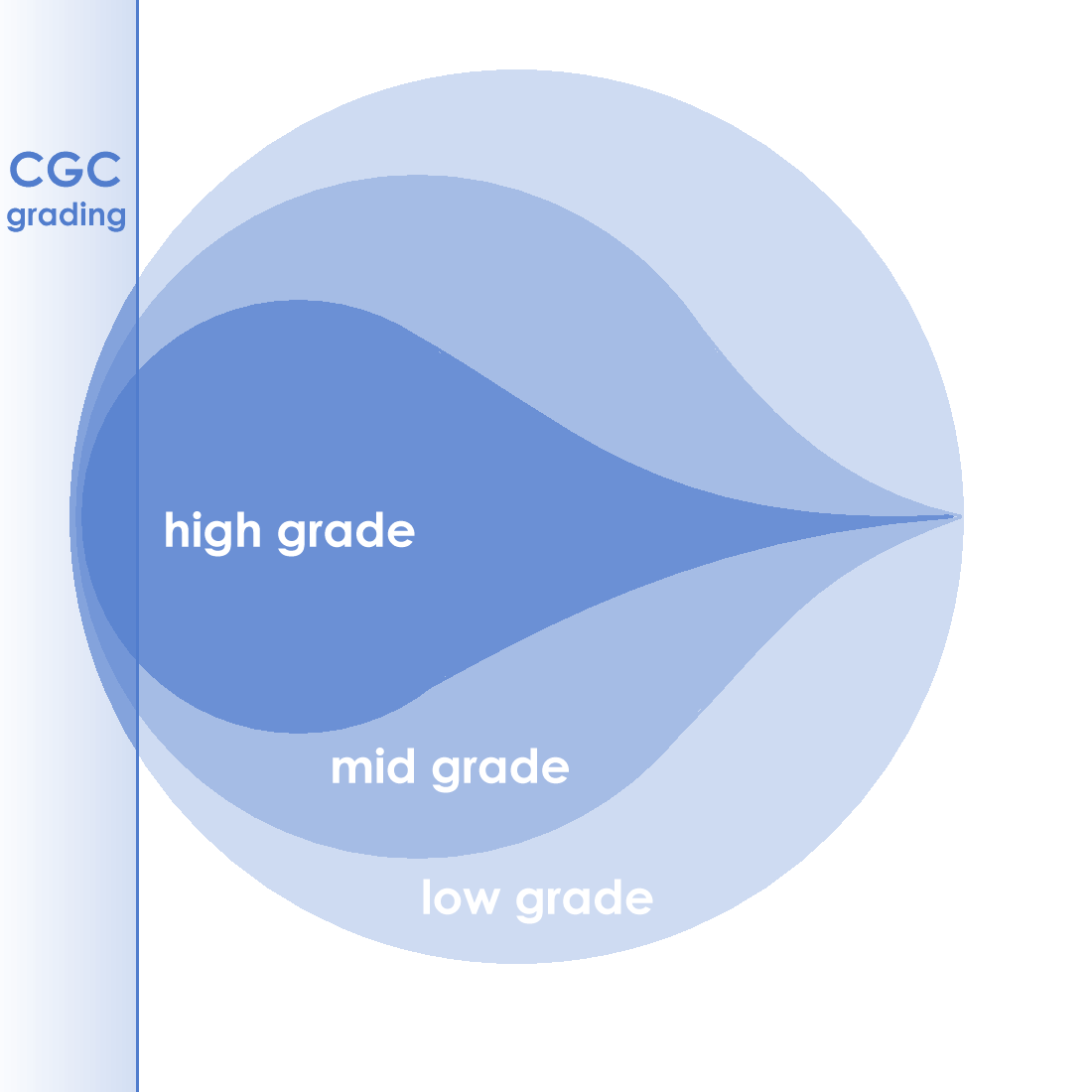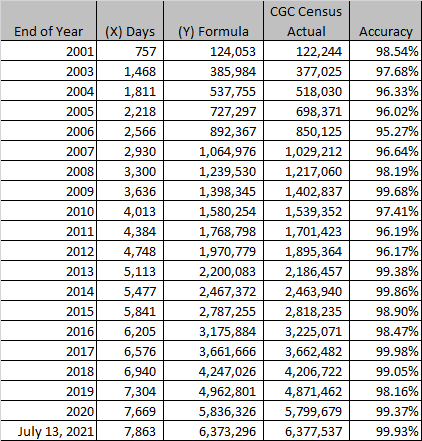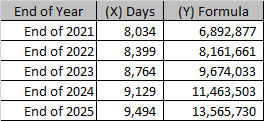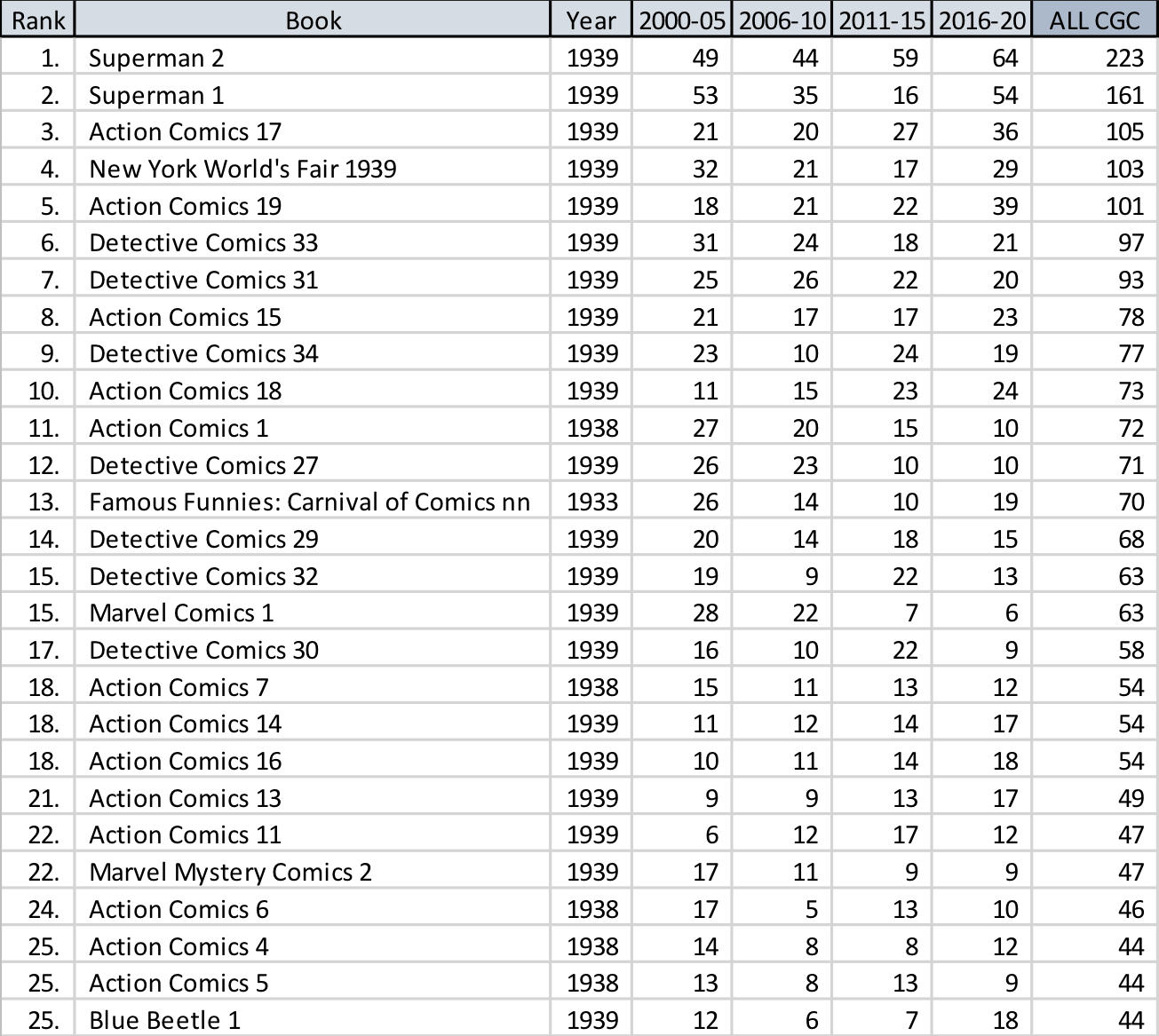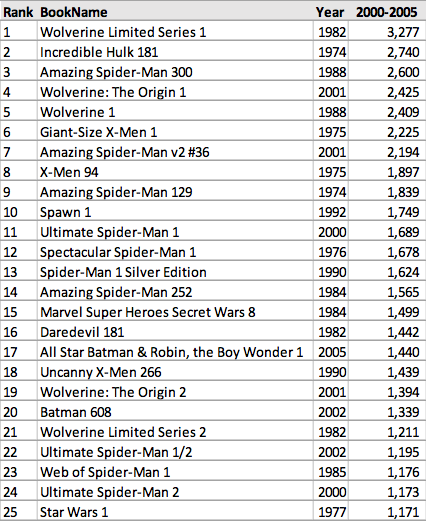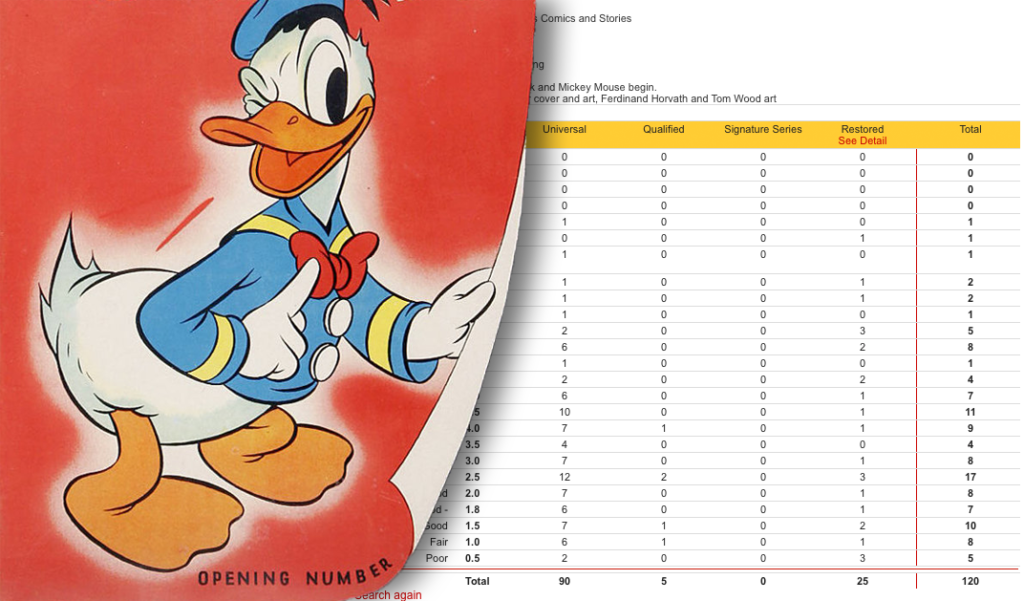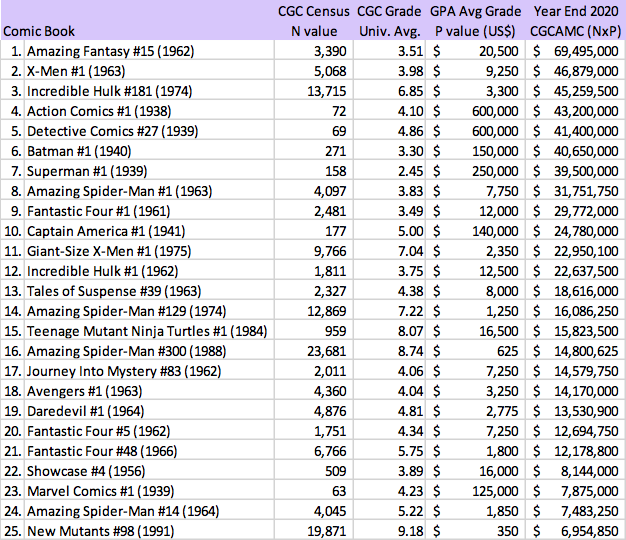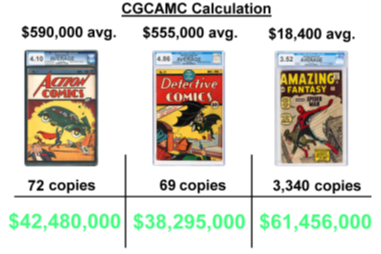Calculated at CGCdata.com with an interactive data visualization at Flourish Studio. The graphic contains over 70,000 data points and may be slow loading on your device. Once the visualization has loaded, press play > for all years or slide to select a single year. Hover or select an individual data point for book details. The original version of this graphic was posted February 8, 2023 using CGC data from January 2023. This graphic was updated in August 2023.
Keston’s Old School Comic Books introduced and featured this graphic on August 26, 2023.


